10 top tips for creating a great house for your rabbits
They say home is where the heart is, and we think this applies to rabbits too! Our rabbits’ housing is very important for their overall welfare. Rabbits have five welfare needs. These are the five things that need to be looked after to help our rabbits stay happy and healthy. These needs are:
- Diet
- Health
- Behaviour
- Companionship
- Environment
In the wild, rabbits live in burrows. These are underground housing systems which together make a rabbit warren.
TIP ONE: Rabbits need space! A hutch is not enough.
Although they’re only little, rabbits need a lot of space. How much space rabbits need exactly will depend on their size. For example, Giant rabbits need much more space, compared to Dwarf breeds. However, at a bare minimum, two bonded rabbits (regardless of size or breed) need a housing that is 3m x 2m x 1m high.
Are hutches good for rabbits?
In short, on its own no, a hutch is not enough for rabbits. While it can be a suitable sleeping area, your rabbits should have constant access to an exercise area. They need a space that is at least 3m x 2m x 1m high they can access at all times. Rabbit hutches often restrict rabbits to a small space which can lead to health and behavioural problems. For some examples, check out the Rabbit Welfare Association and Fund website.
Can I adapt a rabbit hutch?
Yes! You don’t need to throw your rabbit hutch away. Instead you can use items like tunnels and doorways, to connect your current rabbit hutch to their run. Companies like Runaround offer some great connection options. Remember, your rabbits should have constant access to their exercise area, and they should have at least one space that is 3m x 2m x 1m high to give them room to roam when they like.
For more information on adapting your rabbits’ housing, check out our blog.
TIP TWO: Rabbits need room to roam, and constant access to their exercise area
Rabbits are active animals so need lots of space to hop, binky, and explore. As well as making sure their housing is big enough, it’s important that they have constant access to an exercise area. Rabbit runs are an easy way to make sure your bunnies have enough space. Their run and living area both need to be at least 1m high – this is so your rabbits can stretch up onto their hind legs and scout out their enclosure.
TIP THREE: Location, location, location – you can house your rabbits indoors or outside
Rabbits can be housed indoors or outdoors – whichever fits best with your space and lifestyle. The main thing to remember is that while they’re different environments, the all important space rule remains the same. We need to make sure we make room for our rabbits, giving them at least a 3m x 2m x 1m high space to roam in.
Whichever environment you choose, there are a few extra things to bear in mind. For outdoor rabbits, making sure their homes are secure from predators like foxes is important. Whereas from indoor rabbits, you’ll need to tidy away any household hazards like wires or hazardous house plants.
For more specific information on indoor rabbit enclosures, or outdoor rabbit housing, take a look at our blogs.
- Indoor rabbit housing
- Outdoor rabbit enclosures
TIP FOUR: Rabbits need a friend
As well as needing a great home, our rabbits need a friend or small group of buns to share it with. You should have at least two rabbits together. This is because rabbits are social animals, so they need the company of a bunny companion – or two!
Rabbit littermates often make good companions, but you can bond rabbits together too. The Rabbit Welfare Association and Fund has some great advice on creating bunny best friends. It is vital that your rabbits are neutered. Rabbit neutering can be done with your vet and helps to lower the risks of certain illnesses and unwanted behaviours, as well as preventing pregnancies.
Can rabbits and guinea pigs live together?
Rabbits and guinea pigs cannot live together. They have different needs, including needing different food, having different housing requirements, and different behaviours. They just can’t understand each other and don’t make a good pair. Plus, rabbits also carry something called Bordetella Bronchiseptica, a bacteria that can make guinea pigs very ill.
TIP FIVE: Separate where your rabbits sleep and where your rabbits poo
Noone wants to sleep where their toilet is! It’s the same for our rabbits, their sleeping area and rabbit litter tray should be separate. Their main feeding area, with their water bowl or bottle, and feeding hay should also be away from their litter tray. However, rabbits do often like to poo and chew! You can often find rabbit litter trays with hay racks attached which are perfect for this.
TIP SIX: Be in the know about rabbit security and secure your rabbit housing
Whether they live inside or outside, it’s vital to keep your rabbits safe. For outdoor rabbits, not only do you need to stop your rabbits getting out of their housing, you also need to stop predators from getting in.
Chicken wire is not suitable for rabbit housing as it is too thin, and predators can often chew their way through. A 16g or 12g wire with 25mm holes will keep out predators such as rats and foxes. If you are concerned about smaller predators such as stoats and weasels, consider 13mm instead. All wires should be fixed to the inside of their run, rather than the outside. Secure their housing further using bolts that you can padlock for extra security.
For indoor rabbits, as well as needing secure housing, the potential dangers lie in what’s around them. Unfortunately, there isn’t such a thing as rabbit safe house plants. The Rabbit Welfare Association & Fund say:
We would recommend keeping all house plants way out of reach of your rabbits, or even in a different room.
If your indoor rabbits are free roaming, cover up any wires – we all know how rabbits love to chew! And consider what they can reach. If you don’t want your skirting boards or furniture legs chewed, consider getting some protective covers to keep them safe from rabbit teeth.
TIP SEVEN: Rabbits like to hide
Rabbits will hide because they’re a prey species. When they feel nervous or threatened, they’ll want somewhere to go to escape. It’s perfectly normal behaviour, and something us owners should help them do! Give your rabbits lots of different places to hide themselves away in their housing. Each hiding place should have two entries/exits. This is so your rabbits don’t feel trapped.
Things like tunnels and platforms are great for hiding in and under. For a DIY solution, pop some feeding hay into an empty cardboard box with two holes cut out of it – that will make one entrance and one exit for your bunnies.
TIP EIGHT: Give your rabbits the best rabbit food
Your rabbits need a nutritious, balanced diet that gives them everything they need to stay happy and healthy. Their diet should be made up of:
- 85-90% high quality feeding hay or fresh grass
- 10% rabbit safe leafy greens
- 5% nuggets – not muesli!
- The occasional healthy treat
- Constant access to fresh clean water
Did you know, rabbits spend an incredible 70% of their time awake eating! But there isn’t a set dinner time for rabbits. They’ll want to eat their tasty feeding hay or fresh grass all day, everyday. Place lots of high quality, dust extracted feeding hay around their housing so they can have a nibble whenever they like! Great ways to make feeding hay more interactive include:
Rabbit hay feeders
Hay feeders, or rabbit hay racks, are an easy way to store feeding hay for your rabbits. You can get freestanding hay feeders, or ones that hook onto the walls of your rabbits’ enclosure. By popping some hay in these, you’ll encourage your rabbits to stretch up for their hay – making it more interesting!
TIP NINE: Give your bunnies great rabbit enrichment
As well as the need to live in a suitable environment, one of our rabbits’ other five welfare needs is behaviour. Rabbits are incredibly intelligent and we need to keep their brains busy throughout the day. Providing enrichment in their housing is a great way to keep them entertained and get those bunny brains working.
Rabbit safe toys
Keep your rabbits entertained for hours by providing them with a safe collection of their favourite rabbit toys. There’s lots of toys for rabbits available online and in pet shops – it’s all about finding what your bunnies prefer. Some commonly loved toys include:
- Willow balls
- Tunnels
- Puzzle feeders
- Baskets
- DIY toys. Stuff an empty cardboard toilet roll with hay and add some tasty forage – endless fun!
What are rabbit puzzle feeders?
Things like willow balls and snuffle mats all make our rabbits’ minds work, which is great for their enrichment and exercise. Try popping some of their daily portion of nuggets into a puzzle ball, or hiding them with some tasty forage in a snuffle mat. It will get their minds working and make feeding time fun.
TIP TEN: Clean your rabbits’ housing regularly
You will need to do a quick clean of your rabbits’ home every day. Do a daily spot check, looking for, and removing, any soiled bedding or hay. Remove any uneaten food too. This is a good opportunity to change water bowls and bottles, and refill their feeding hay.
Every so often, about every week, it’s a good idea to do a more thorough clean of your rabbits’ housing:
- Set aside a small portion of clean bedding material and hay (you’ll need that later)
- Remove the rest of their bedding and hay
- Give their housing (that’s their rabbit hutch and run, shed, or indoor area) a thorough sweep to remove any droppings or uneaten food
- Replace with all new bedding and hay, then pop the small amount of old (but clean) bedding and hay back in too. The familiar smell will help your rabbits to quickly settle back into their clean home!
About once a month, your rabbits’ housing will need a deep clean. Similar to your thorough clean, replace all their bedding and hay, giving it a good sweep for uneaten food or droppings. But this time, give it a scrub with some pet safe disinfectant – you can find this at most pet shops or online.

